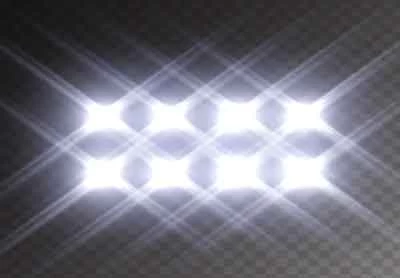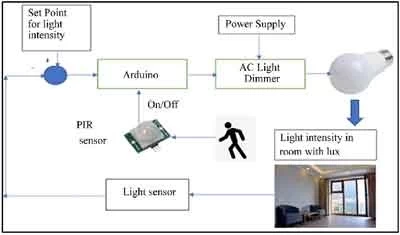Combatting Flicker and Glare in Automated Lighting Systems

Building Automation Systems (BAS) offer a powerful solution for optimizing lighting systems within modern buildings. However, achieving optimal lighting control goes beyond just energy efficiency. Ensuring visual comfort for occupants is equally important.
BAS encompass various elements designed to enhance efficiency and comfort within a built environment. Lighting, a pivotal component of BAS, significantly influences occupant comfort and energy consumption. However, challenges like flicker and glare can undermine the visual comfort these systems aim to provide. Understanding these issues and implementing effective mitigation strategies is crucial for optimizing the performance of automated lighting systems.
Visit Our Building Automation Study Course
Understanding Flicker in Lighting Systems
Flicker refers to rapid variations in light intensity, which can cause discomfort and health issues, including eyestrain, headaches, and in severe cases, epileptic seizures. In automated lighting systems, flicker is often induced by dimming technologies, especially when they are incompatible with LED drivers or when poor-quality LEDs are used.
Technical Causes of Flicker
Flicker in BAS-controlled lighting can stem from several technical causes. Pulse-Width Modulation (PWM), a popular dimming technique, rapidly cycles the light source on and off at high frequencies. If not properly implemented, these cycles can become noticeable to the human eye, causing flicker. Additionally, fluctuations inherent in the AC power supply (mains frequency) can interact with some lighting equipment, leading to flicker, especially in systems lacking filters to mitigate these variations. Finally, mismatched dimming controls and light sources can create an unstable light output, also resulting in perceptible flicker.
Glare: The Overlooked Nuisance
Glare occurs when there is a significant contrast between bright light sources and the surrounding environment, leading to visual discomfort or impairment. In automated systems, glare can be exacerbated by improper placement of luminaires, excessive brightness levels, or inadequate shading solutions.
Types of Glare
- Direct Glare: Caused by direct exposure to bright light sources.
- Reflective Glare: Occurs when light reflects off surfaces into the user’s eyes.
- Discomfort Glare: Results from a lack of uniformity in the lighting setup, causing discomfort without necessarily impairing vision.
Mitigating Flicker and Glare
Addressing flicker and glare requires a multi-faceted approach that combines careful selection of hardware, thoughtful system design, and intelligent control strategies.
Strategies to Combat Flicker
- Select High-Quality LEDs: Choose LEDs with high-quality drivers that ensure a stable light output.
- Use Advanced Dimming Technology: Implement dimming systems that offer smooth transition and control, such as those utilizing continuous current reduction instead of PWM.
- Ensure Compatibility: All components of the lighting system should be compatible to prevent performance issues that can lead to flicker.
Controlling Glare in Automated Systems
- Intelligent Shading Solutions: Automated shade systems can adjust in real-time to changes in daylight, reducing the incidence of direct and reflective glare.
- Proper Luminaire Placement and Design: Ensuring that light sources are strategically placed and designed to minimize direct exposure to the eyes.
- Dynamic Lighting Control: Systems that adjust brightness based on ambient light levels can help maintain an even and comfortable lighting environment.
Performance and Technical Considerations
Effective flicker and glare mitigation in automated lighting systems hinge on rigorous performance standards and technical considerations.
Performance Metrics
- Flicker Index and Percent Flicker: Quantitative measures used to evaluate the flicker level of lighting sources.
- Unified Glare Rating (UGR): A numerical way of quantifying the likelihood of glare occurrence.
Technical Considerations
- System Integration: Ensure seamless integration of lighting, dimming, and shading controls.
- Energy Efficiency: Mitigation strategies should not compromise the energy efficiency of the system.
- User-Centric Design: Solutions should prioritize occupant comfort and well-being.
Combatting flicker and glare in automated lighting systems is essential for ensuring visual comfort and enhancing the overall functionality of building automation. Through careful consideration of the technical causes, implementation of effective mitigation strategies, and adherence to performance standards, it is possible to achieve a balanced and comfortable lighting environment. As technology evolves, so too will the strategies to address these challenges, leading to more sophisticated and user-friendly automated lighting systems.





